20. Cape Fear (1991)
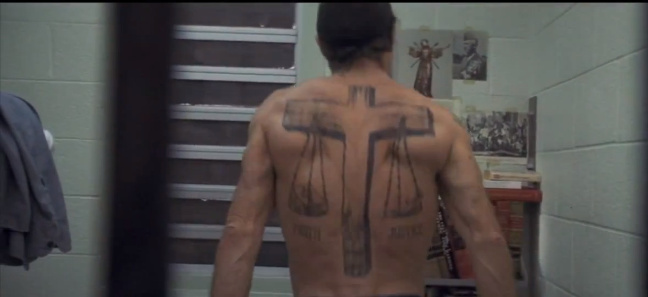
As Saul Bass’s unique title sequences to this film ends with drop of blood falling down, the entire frame turns red with the blood dropping. Then we see the close-up of the eyes while the frame is still completely red. Then the red frame turns to a negative style shot while the eyes remain. After this the camera zooms out to show us the daughter Daniel telling us about the river called Cape Fear.
The masterful use of red is for highlighting the bloodthirsty and vicious nature of Max Cady. He was sentenced to 14 years of prison for raping a sixteen-year old girl. After being released he thought that had been wronged and blamed his own lawyer Sam Bowden for this injustice. So as revenge he harassed Sam’s family while cleverly staying out of anything against the law.
The negative style shot, used in more sequences in the latter part of the film, has that uncanny presence when viewed. The presence of Cady is similar to that – uncanny and hence results in fear.
The film revolves around fear that Sam’s family experiences due to the brutality of Cady’s intentions. But the use of red and negative style shots just do half of the work. The real fear that the audiences see is in the eyes of the characters. The hopelessness and dread – all can be understood just by looking at their eyes. And hence showing us the eyes in the opening makes us feel the same fear. Oh and Elmer Bernstein’s rendition of Bernard Hermann’s original score makes the experience all the more chilling.
19. Patton (1970)
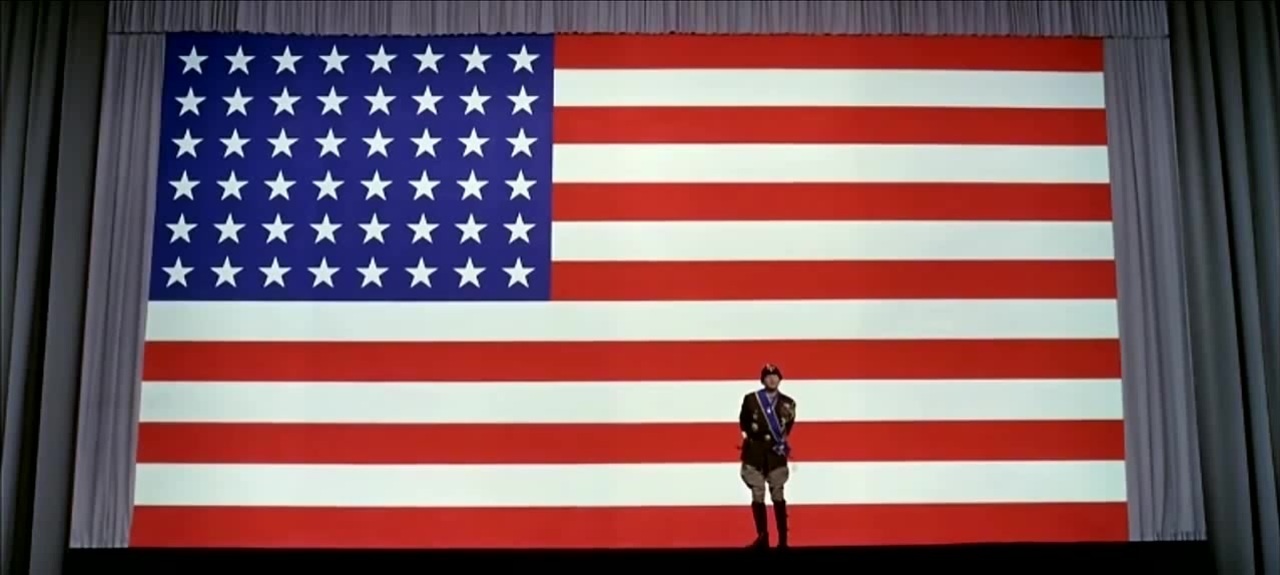
The enormous American flag that occupies the entire frame in the opening shot of Patton is miniscule as compared to the immense sense of patriotism for America and love for war that General Patton possessed. We see him arrive on the podium to address the army with the huge flag in the background. In his military attire he is saluting as the American national anthem plays.
For him war is glorious and inherent in man’s nature. This is the reason why he researches and romanticizes about the memorable battles fought in the past. He believes that the highest form of nobility can be achieved only through fighting wars for your country and sacrificing yourself in the process.
Hence he has the utmost respect and a soft spot in his heart for those who have been wounded gravely or are struggling to hold onto their lives. Given his glorified view of war, which is obviously outdated due to how many innocent lives wars claim, and his colourful personality he sure did receive a lot of flak from his superior officers. But in capturing these ideals of his precisely there is no better way to show it visually than the opening shot as well as scene of the film.
18. Fargo (1996)

Leave it to the legendary Roger Deakins (the go-to cinematographer for the Coen Brothers) to capture the freezing and stark landscape of an important but non-human character – the place Fargo itself. Set to the highly underrated score by Carter Burwell, we see the snow covered roads as the film slowly fades in to the hazy environment. In slow motion Jerry Lundegaard, driving a car towing another vehicle, comes from afar, inching towards the camera to a rising background score.
On the surface him carrying the vehicle which is the Tan Sierra is the beginning of the plot. This vehicle is part of the payment given to the thugs who are to kidnap Jerry’s wife as per the latter’s wish. If the area depicted in the film is brutal and harsh then so are some of the characters. Jerry is dishonest in his business and hence needs money which he wants to extort from his father-in-law who is very well off. So he devises a plan to get his wife kidnapped so as to force him to pay the ransom.
Gaear Grimsrud brutally kills his own partner Carl with an axe and then inserts his body parts in a wood chipper to leave no trace of him. He does this so that he can get all the ransom money. The wood chipper spewing blood from its opening onto the white coloured ground is in itself disturbing to watch.
What makes it even more disturbing is that these characters are driven to commit such heinous acts only over a sum of money. While all this might seem grim and pessimistic, the Coen brothers, on the flip-side, inject a sense of humour into the screenplay, keeping the brutality understated but ever-present. This mixture results in perhaps one of the best black comedies to ever put onto the screen.
17. Ivan’s Childhood (1962)

In one of the most stellar debuts by a film director, Andrei Tarkovsky crafts a harrowing experience of World War 2 through the eyes of a twelve-year old Ivan. The film opens with one of Ivan’s dream sequences. Ivan moves, almost flies, through beautiful landscapes such as hills and expansive forests. While enjoying these, he spots his mother carrying a bucket of water. He excitedly goes up to her and tells her about the cuckoos he spotted. She reacts with a warm smile on her face.
This heaven-like serene environment is introduced to us with a close-up shot of Ivan near a tree with a fully formed cobweb covering nearly his entire face. The story shows a war hardened Ivan who not only lost his family but also his innocence during the war.
Now only thoughts of revenge and bitterness revolve in a twelve-year old’s mind. The harsh reality of war torments him which is brilliantly portrayed while framing him with a cobweb. The repulsive nature of a cobweb is similar to war that has robbed him of his care-free childhood. Such exquisite framing proves why Tarkovsky is a master of the visual language which he bettered in his latter films mainly Stalker and The Mirror.
16. Taxi Driver (1976)
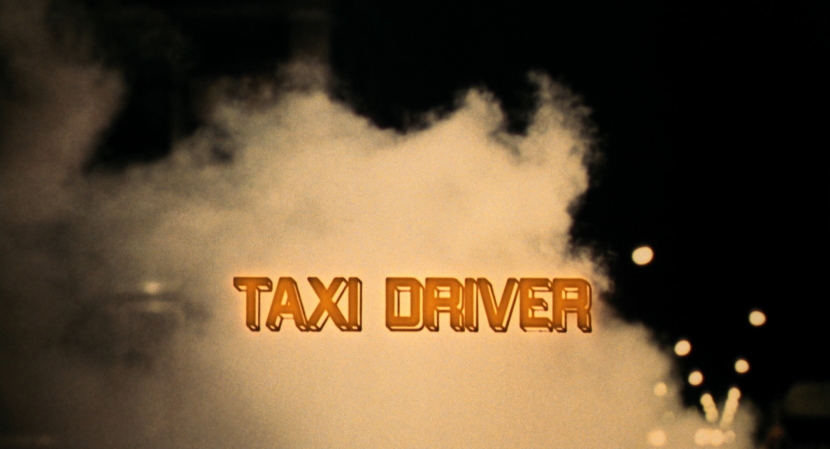
Travis Bickle drives the cab during night shifts since he suffers from insomnia. He is in this vehicle for most of the time of the entire day. In this he glides through the streets of New York witnessing the kinds of people he despises – hookers, drug dealers, pimps etc. He refers to them as the scum of the city and the more he sees them the more disgusted he is.
The cab becomes an integral part of his daily routine, almost like an extension of the character himself. So what better way to introduce Travis other than by showing the cab itself in the opening shot.
With an incredible score from the legendary Bernard Hermann, we see smoke rising from the manholes, a common phenomenon on the streets of New York. Then a low camera angle shows us Travis’s cab coming out through the smoke in slow motion. This might seem something trivial, but Taxi Driver combines music with dreamy visuals like this to portray Travis by showing his cab moving through the smoke or in other words through the dirty streets of New York.
15. Raging Bull (1980)
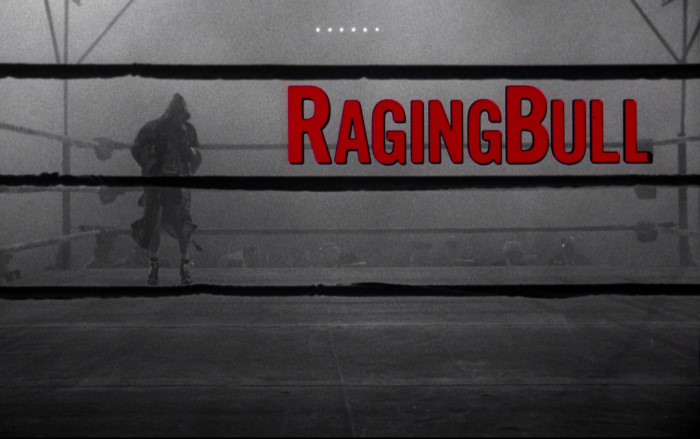
Jake LaMotta achieved the highest accolades throughout his career of boxing. He was known for expressing his aggression through his lethal punches whenever he was inside the four sides of the boxing ring. Most of the time his opponents would crumble and as the film suggests there was a time when ‘there was no one left to fight him’. His aggression and anger should have been contained inside the boxing ring.
On the contrary it extended into his personal life too and the resulting insecurity and self-destructive nature not only troubled him but also the ones he cared about like his wife and brother. We see him practicing in the boxing ring, as the film opens in slow motion coupled with black and white photography.
The camera remains static in the entire shot and outside the ring media personnel are taking photos just showing how popular and feared he was. Not only the opening shot but the entire film is in black and white except for the time when he and his brother get married to the women they love and have a lot of treasured moments with each other. Symbolically, that is the only time in his life which was colourful and cheerful. The rest of the time it was his actions only that destroyed everything he loved.
14. Prisoners (2013)
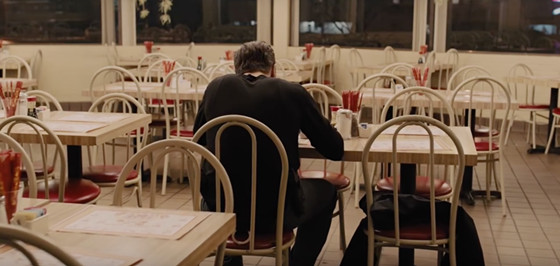
Every significant character in the film seems to be trapped in some way or the other. The parents of the kidnapped children especially Grace Dover seem to be trapped in their unending grief. Bob, who fled from his captors a long time back, is trapped in the trauma he faces from his torture, while Alex has forcibly trapped by his captor Holly Jones, masquerading as his aunt, since his childhood as he is unable to revolt due to his limited mental abilities. He is even held against his will in a secluded place by Keller Dover as he suspects him of the kidnappings.
Detective Loki is working on this case and has a track record of successfully solving all the cases assigned to him. Unfortunately, the number of dead ends outnumber the number of leads causing him to be trapped in his frustration. Solving the case became equivalent to cracking the convoluted mazes drawn by Bob.
Lastly Keller Dover is trapped in a dilemma. He chose to go against his religious faith by torturing a helpless Alex to desperately get answers about his daughter’s kidnapping. But at one point of time it gets difficult for him also to see somebody in tremendous pain because of his actions. Whether he should commit such questionable acts or refrain from it knowing that it is wrong. However, by not committing this act he might just risk on losing on the opportunity to save his child.
It feels like everybody is a prisoner, much like how the title suggests, to some overpowering force. The film opens with an array of tall trees on a cold and snow-filled landscape. A deer passes through and the camera pulls back to reveal a rifle pointing at it. Even the deer, very much like the characters of the story, is trapped by the hunter and visually the framing of trees is such that it looks like the bars of a jail cell once again reinstating the situation of a prisoner.
13. The Godfather (1972)
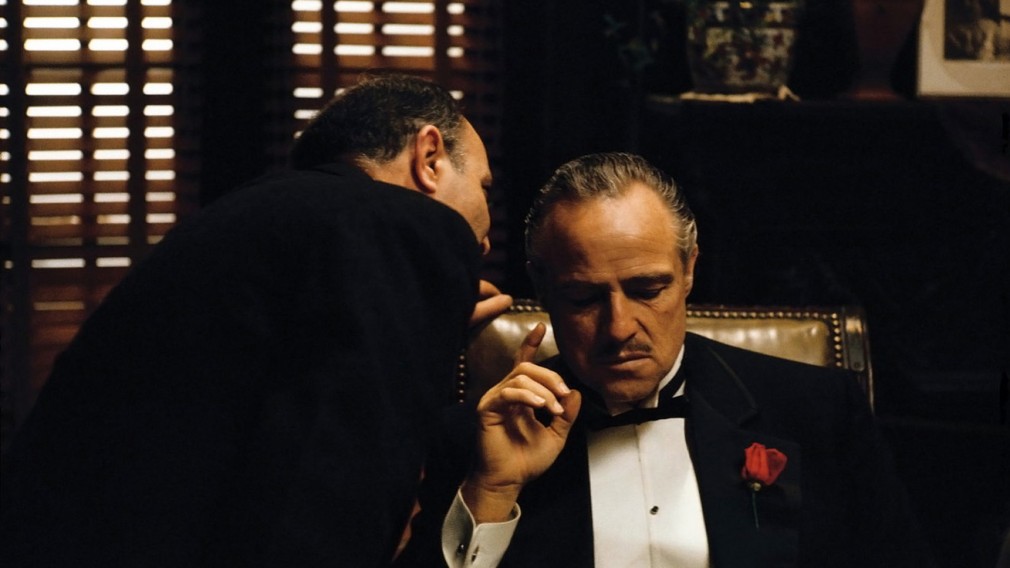
Before we see any kind of visual, on a completely black frame we hear the words ‘I believe in America’. Then the film opens with a close-up of Bonasera. The director, Francis Ford Coppola, immediately hints at the theme of the American Dream with this technique.
Although this list contains those films that convey some idea or feeling primarily through the visuals, The Godfather uses both the visual language and the auditory language in the form of the key dialogue as mentioned, to introduce the audience to the world of the Mafia.
As Bonasera narrates the gruesome tale of the injustice meted out on him and his daughter, the camera slowly zooms out to show the backside of the mysterious figure listening to his woes. When this mysterious figure asks what can he do to alleviate Bonasera’s pain, it is the latter’s reaction that is surprising.
Instead of stretching out across the table, he gets up and moves around the table, comes close to the figure and whispers his intention in his ears. This minor but significant aspect brilliantly shows the respect that this figure commands as evident from Bonasera’s actions. To not talk about the lighting in this scene would be unjust to the talents of the cinematographer Gordon Willis.
The entire scene is dimly lit with only Bonasera’s face being illuminated and the figure being nearly silhouetted. A bold lighting choice for that time coupled with the slow zoom and framing result in the viewer asking one question only – Who is this formidable person cast in the shadows that commands so much power that he can fearlessly go against the law?
Thus this introduction of the iconic character of Don Vito Corleone is one of the best because it speaks volumes about him right from the beginning with very little being said. The perfect harmony of such a well realized character and Marlon Brando’s impressive rendition of it holds a significant position in the film’s timeless brilliance.
12. Lost Highway (1997)
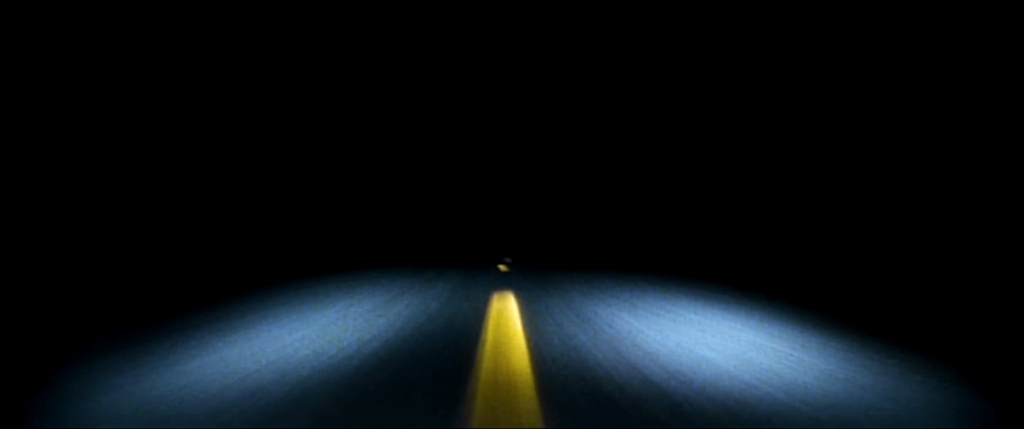
Strips of yellow painted on the road pass by as the film opens. As David Bowie’s adrenaline-pumping song ‘I’m Deranged’ starts, we see the point of view of a car speeding away on a dark and seemingly endless highway. The roads are illuminated by its headlights. The car is being driven rashly and feels like the driver is trying to escape from something or maybe someone.
Later we realize it is actually Fred escaping from the police who are trying to catch him for the murders of not only his wife Renee, but also the men she was sexually involved with. More than an escape, this highway is Fred’s ticket out of the clutches of the police authorities.
We know that he transforms himself completely into a different man named Pete so that he could escape the jail. As his transformation is shown, in a pretty brutal manner, we see the same image of the car speeding on the highway which then stops just before Pete standing by the side. Fred does the same thing in the end of the film to get away.
Obviously it is not possible in the real world to convert into a completely different person. But in David Lynch’s surreal world these things are quite trivial. The presence of this lost highway acts as a means for him to transform magically into someone else and is symbolic of him wanting to desperately escape from custody only because him not committing any of the crimes is the truth he wants to believe in.
11. Memento (2000)
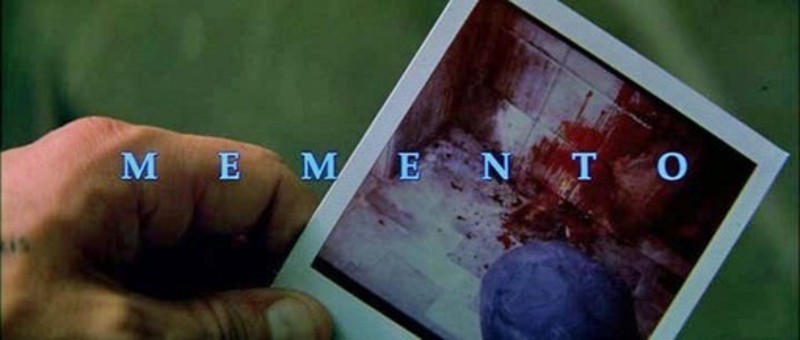
Leonard finally kills the man, named John G, who had raped and murdered his wife. Because of his condition of anterograde amnesia he takes a polaroid photograph of the dead man against a blood-stained wall. This is the method he uses to help him remember the things he has done or has to do. This sounds like an end to a tale of vengeance carried out by someone who has suffered so much.
Surprisingly, it’s the end that the film starts from, going backwards from there. Thus in the opening shot we see the polaroid in Leonard’s hands slowly fading in to show the image of a dead Teddy as he flips it continuously. Only this entire opening is shown in reverse order. Nolan uses this disorienting technique and an innovatively structured screenplay to let the audiences inside Leonard’s head and fully understand the disorientation he experiences with memory.
The part of the film running backwards keeps us asking at every cut where exactly did we start from. But there is more. The polaroid in the beginning fades out from Teddy’s dead body to completely blank. This reverse order is symbolic of how Leonard tells himself a story and keeps believing it only. He tampers the truth so as to suit his own ways, to give him a purpose. And since in his mind he has completely rejected the truth that he was the one responsible for his wife’s death, so the purpose tells him to track down the imaginary killer who took away his wife.